Just like Yellowstone and Grand Teton, Glacier National Park in the Rocky Mountains is a paradise for wild animals. Its diverse landscapes, including forests, meadows, alpine areas, and lakes, provide excellent habitats for a variety of wildlife. In this guide, we will explore the animals you can encounter, the best places to see them in Glacier, and how to ensure your safety in wildlife territory.
Table of Contents
The Abundant Wildlife of Glacier National Park
Glacier National Park is home to almost all of its historic species and is considered one of the best national parks in the U.S. for wildlife sightings. Since the return of gray wolves from Canada in the late 1980s, only two original species are missing – the American bison and woodland caribou. This park is a UNESCO Biosphere Reserve and a North American ecological stronghold, teeming with wildlife. It is part of the Crown of the Continent Ecosystem, one of the largest intact ecosystems in the U.S., and houses a rich diversity of iconic American mammals, including black bears, grizzly bears, wolves, wolverines, moose, mountain goats, and bighorn sheep.

Iconic Animals to Watch for in Glacier National Park
To maximize your chances of spotting wildlife in Glacier National Park, here are the most high-profile mammals you should keep an eye out for. While some animals are abundant and likely to be seen, others are less common or even rare. For instance, spending a couple of hours around Logan Pass in the morning or evening practically guarantees sightings of bighorn sheep and mountain goats. On the other hand, wolverines are extremely elusive, with only about 50 of them in the park.
Iconic Mammals in Glacier National Park
- Grizzly bears: Logan Pass, Hidden Lake, St. Mary Lake, Many Glacier Road, Many Glacier trails (common)
- Black bears: Avalanche Lake Trail, St. Mary Lake, Many Glacier Road, Many Glacier trails (common)
- Gray wolves: Lower McDonald Creek, North Fork area, Camas Road (rare)
- Moose: Lake McDonald, St. Mary Lake, Swiftcurrent Lake, Lake Josephine, Fishercap Lake, Two Medicine Lake (common)
- Bighorn sheep: Logan Pass, Hidden Lake, Iceberg Lake, Grinnell Glacier (very common)
- Mountain goats: Logan Pass, Hidden Lake, Iceberg Lake, Grinnell Glacier (very common)
- Elk: Two Dog Flats, St. Mary Visitor Center area (common)
- Wolverines: High-elevation areas such as the Highline Trail, Piegan Pass, Siyeh Pass, Swiftcurrent Pass, Grinnell Glacier, Iceberg Lake (extremely rare)
- Pika: High-elevation areas such as the Highline Trail, Piegan Pass, Siyeh Pass, Swiftcurrent Pass, Grinnell Glacier, Iceberg Lake (uncommon)
Iconic Birds in Glacier National Park
In addition to the mammals, Glacier National Park is home to over 260 bird species. Despite its northern location, the park’s diverse habitats attract a remarkable number of birds. Keep an eye out for American dippers, bald eagles, ospreys, common loons, hummingbirds, woodpeckers, ptarmigans, and harlequin ducks.

Where to Spot Wildlife in Glacier National Park
Wild animals can be encountered anywhere in the park, including parking areas, campgrounds, trails, overlooks, and even lakes. Crowded places are not necessarily avoided by animals. Logan Pass is a prime example of this. Mountain goats roam through parking lots, grizzly bears wander through meadows and campsites, moose stand nonchalantly on roadsides, and bighorn sheep share trails with hikers. Witnessing wildlife in Glacier National Park is a remarkable and captivating experience, reminding us that we are visiting their home.
The following locations offer exceptional opportunities for wildlife sightings:
- Along the highest part of the Going-to-the-Sun Road (around Logan Pass)
- On high-elevation hiking trails (Highline, Hidden Lake, Iceberg, Grinnell Glacier, etc.)
- In the valleys of the park’s east side (St. Mary and Many Glacier)
Here are five of the best places in Glacier National Park to see wildlife:
Logan Pass
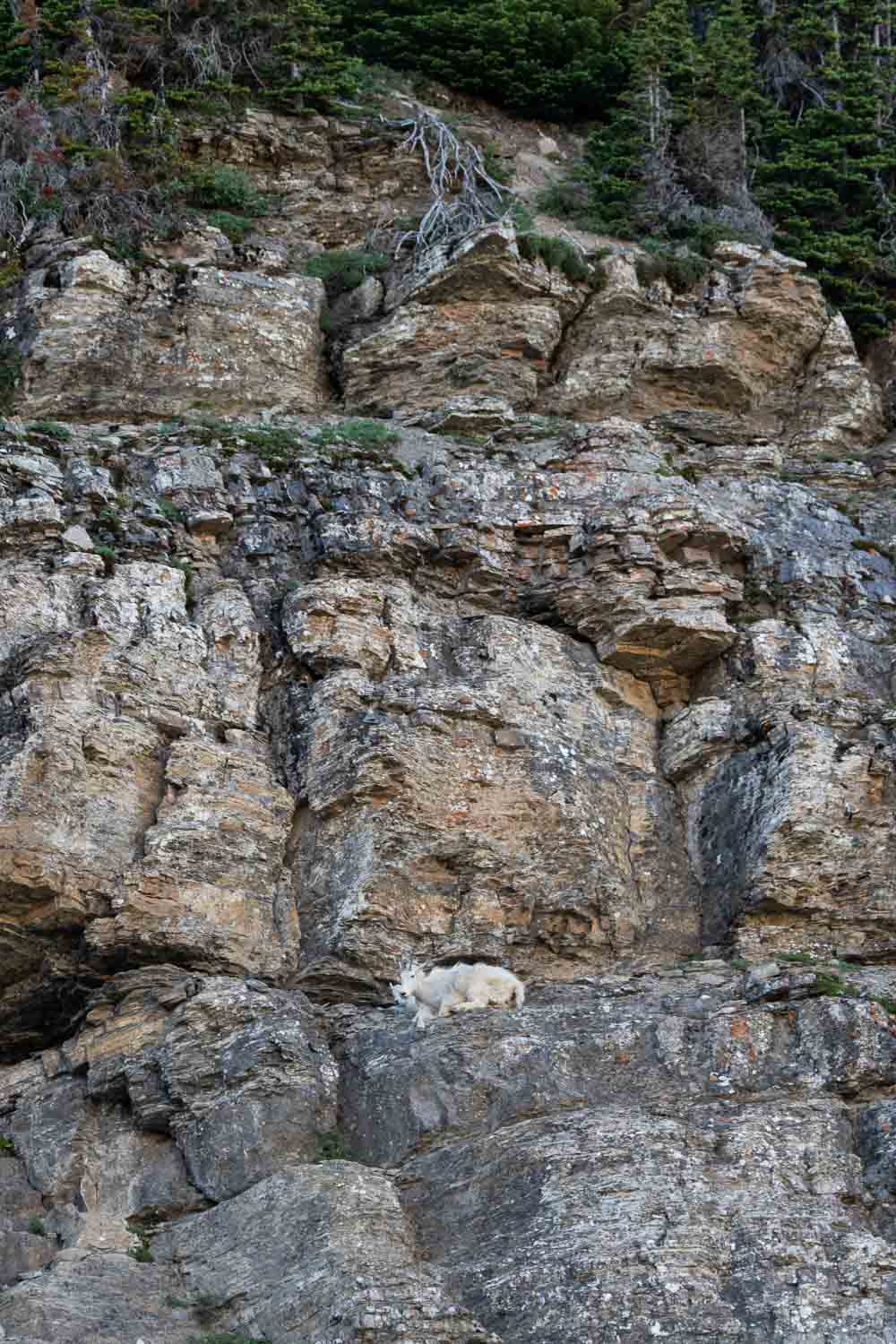
Logan Pass is the highest point (6,646 feet) and a prominent highlight of the Going-to-the-Sun Road. While it can be busy, especially between 8 am and 4.30 pm, visiting at sunrise or near sunset provides the best wildlife viewing opportunities. Bighorn sheep and mountain goats are commonly seen here, and Logan Pass is also prime grizzly bear habitat.
Hidden Lake Overlook Trail
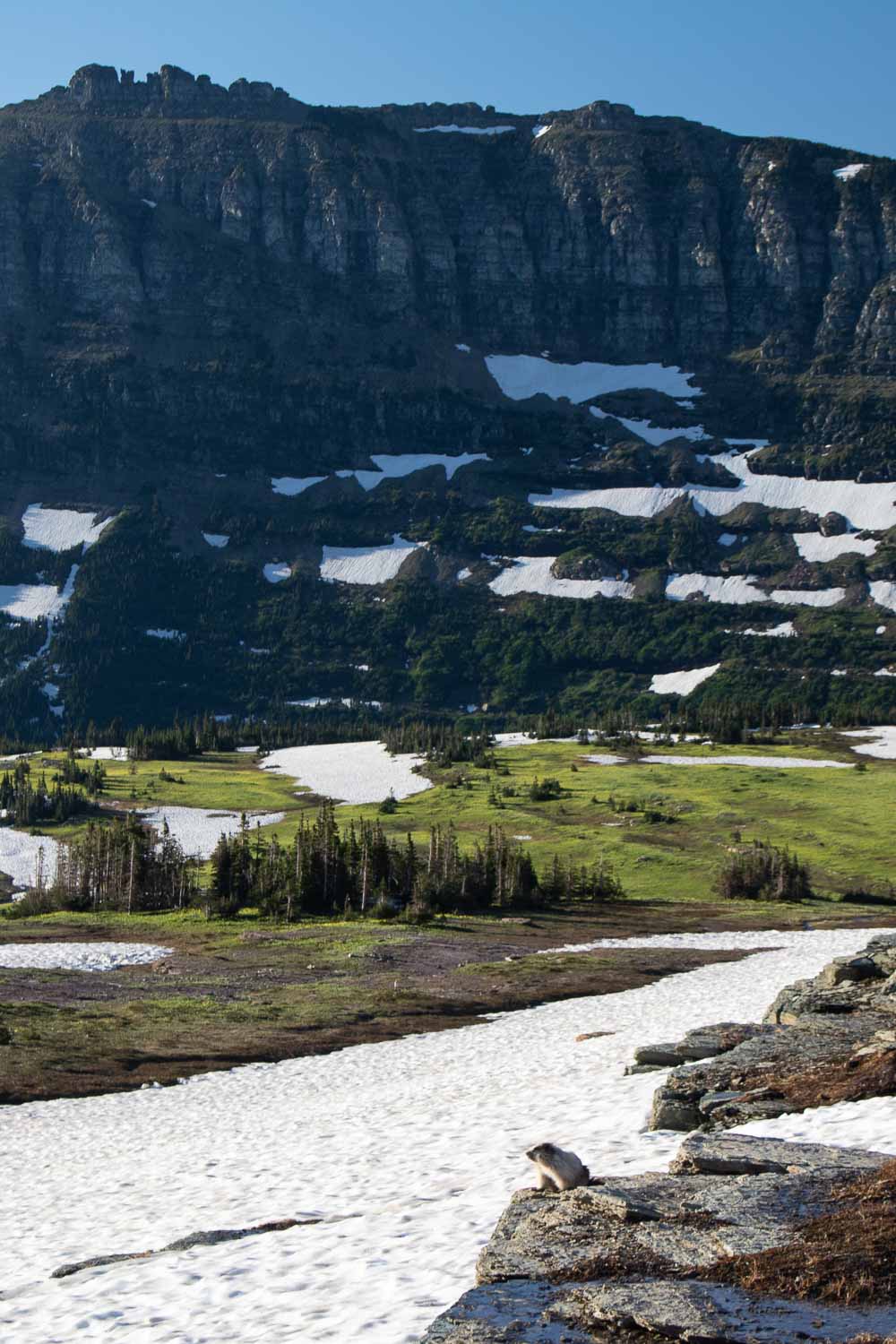
The Hidden Lake Overlook Trail, an extension of Logan Pass, is a fantastic short hike renowned for wildlife sightings. This trail offers incredible views of bighorn sheep, mountain goats, and grizzly bears. The area is also home to smaller mammals like pikas, voles, chipmunks, ground squirrels, and marmots.
St. Mary Lake North Shore
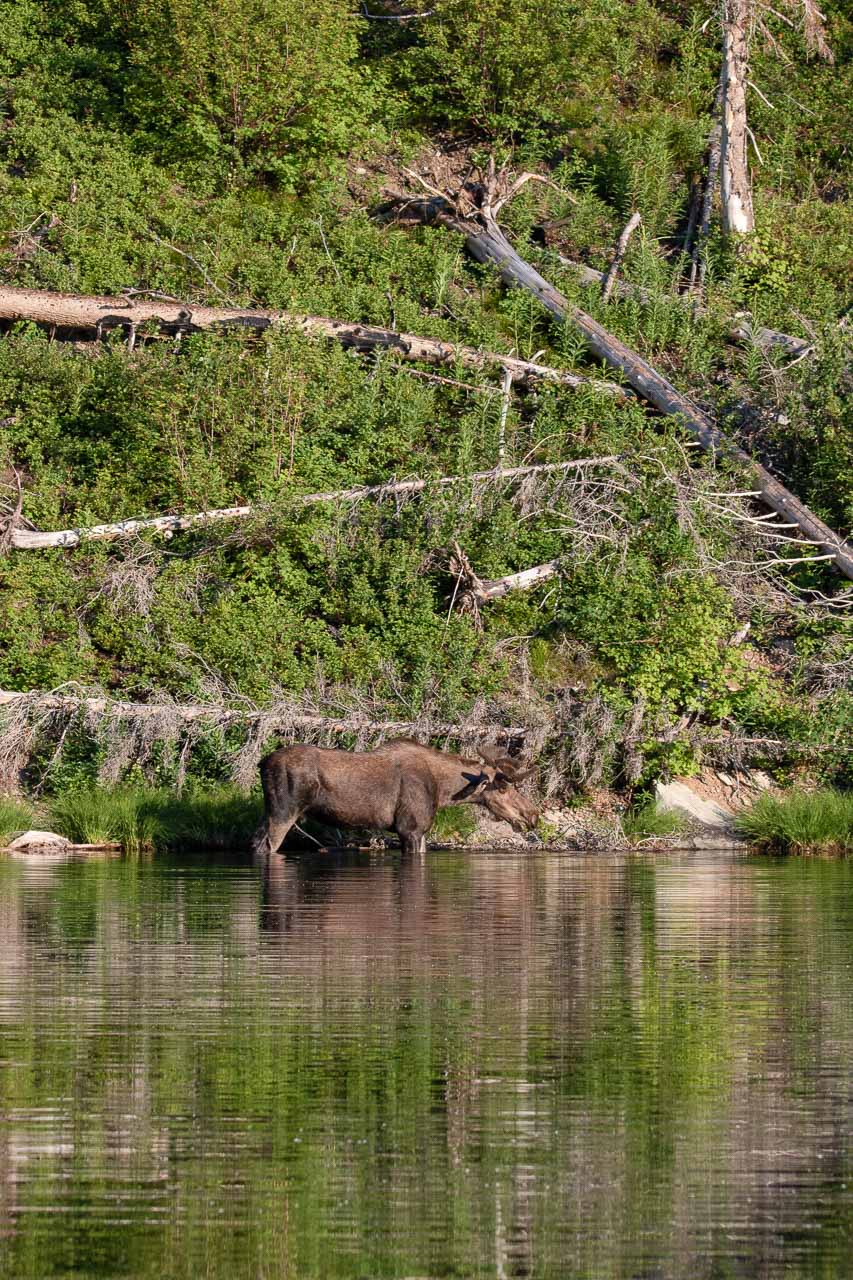
Often overlooked, the north shore of St. Mary Lake on the park’s east side is a haven for wildlife. The area between St. Mary Village and Sunrift Gorge offers diverse habitats and is frequented by black bears, grizzly bears, and moose. Keep an eye out for moose browsing along the shoreline of Lost Lake.
Many Glacier Road
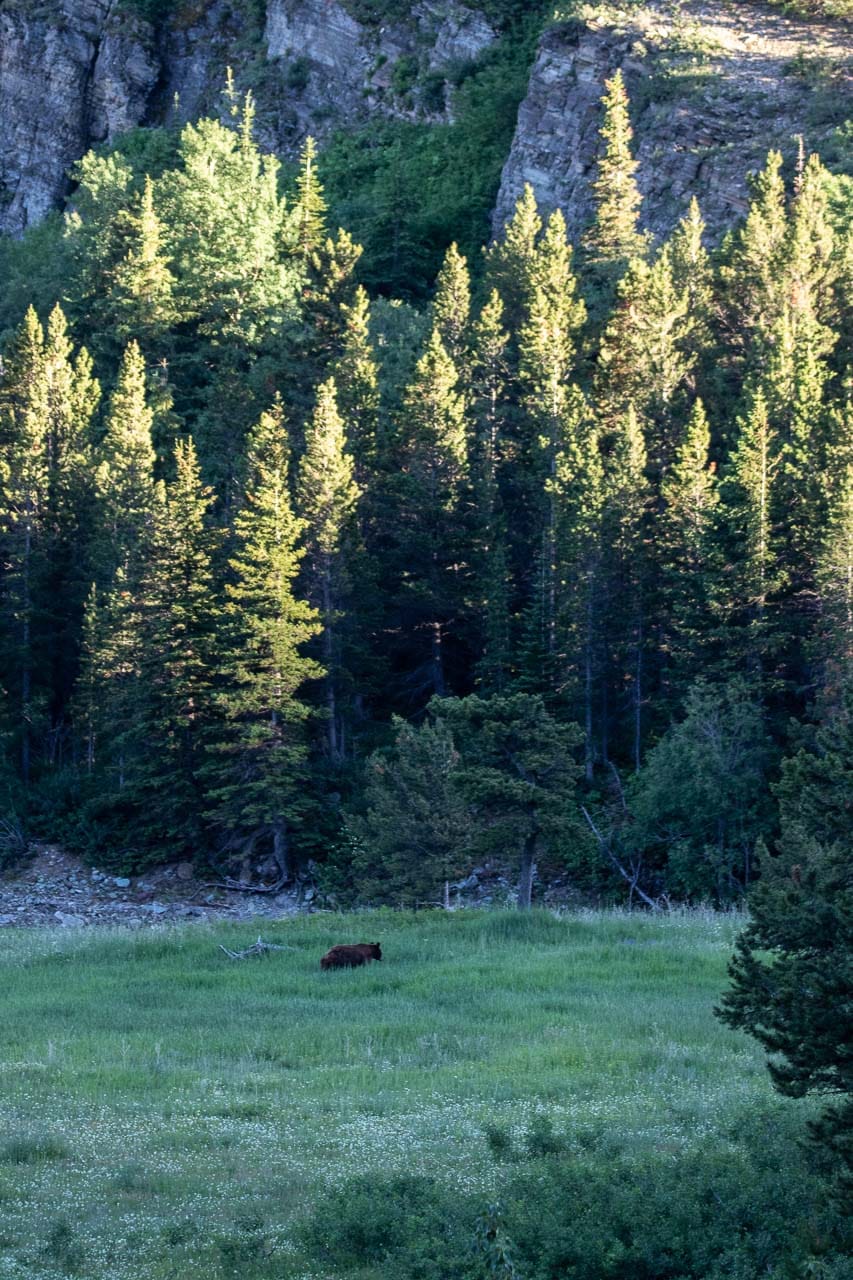
Considered one of the easiest and best places to spot wildlife in Glacier National Park, the Many Glacier Road is a must-visit. Along the road, you can expect sightings of grizzly bears, black bears, elk, moose, and various bird species. The 4.5-mile stretch between the Many Glacier Entrance Station and Many Glacier Hotel/Campground offers some of the finest opportunities for wildlife viewing.
Many Glacier Trails
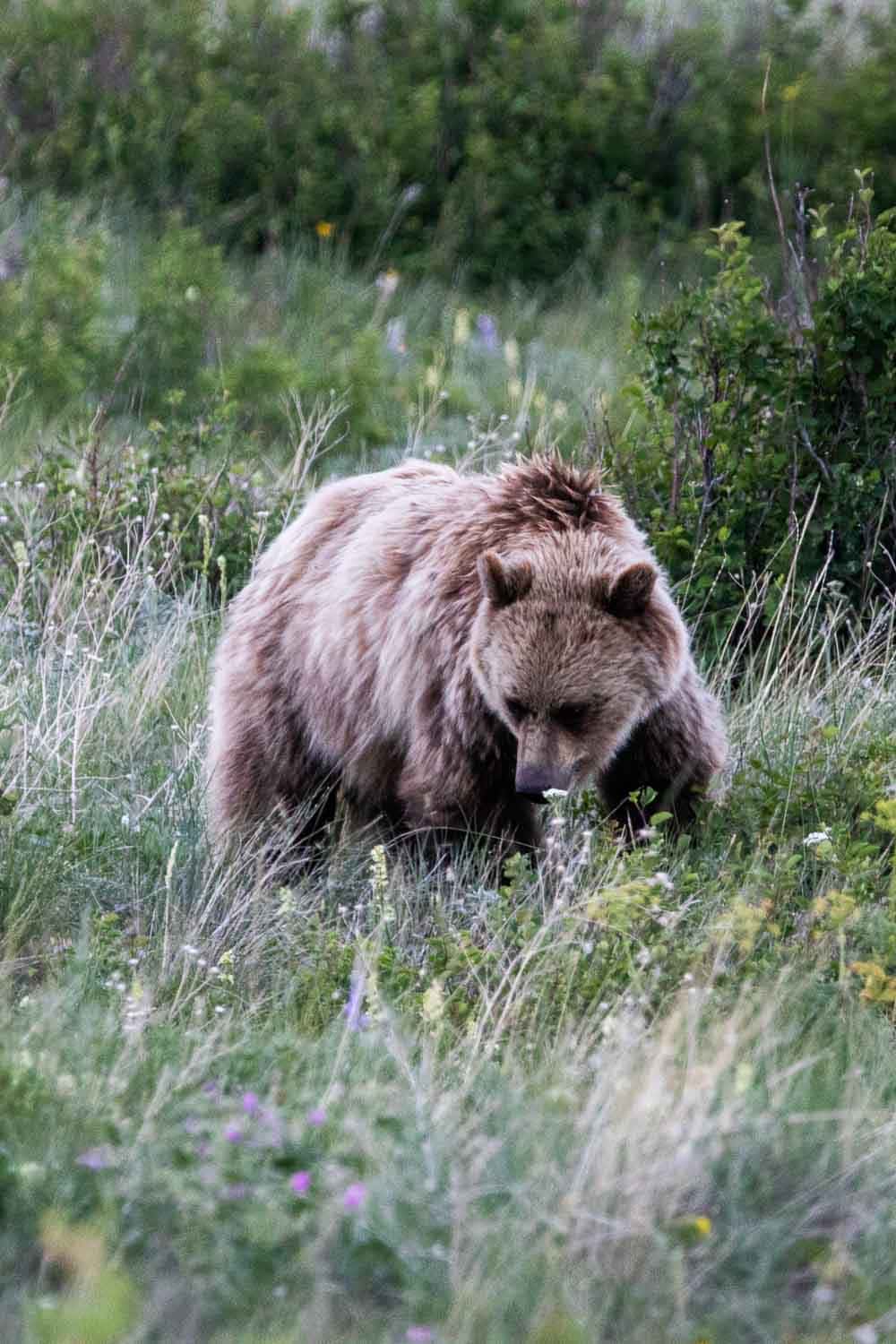
The Many Glacier area is a trailhead for multiple hiking trails leading to stunning destinations such as Cracker Lake, Lake Josephine, Grinnell Lake, and Grinnell Glacier. These trails pass through prime wildlife habitat, making encounters with black bears, grizzly bears, moose, and other species highly likely.
Wildlife Safety in Glacier National Park
Glacier National Park offers unforgettable wildlife encounters, but it’s crucial to prioritize safety. Follow the park’s guidelines and use common sense to ensure a positive experience for both visitors and animals. Stay at least 300 feet away from wolves, black bears, and grizzly bears, and maintain a minimum distance of 75 feet from other wildlife species. Carrying bear spray is essential, and understanding how and when to use it can be a life-saving skill.
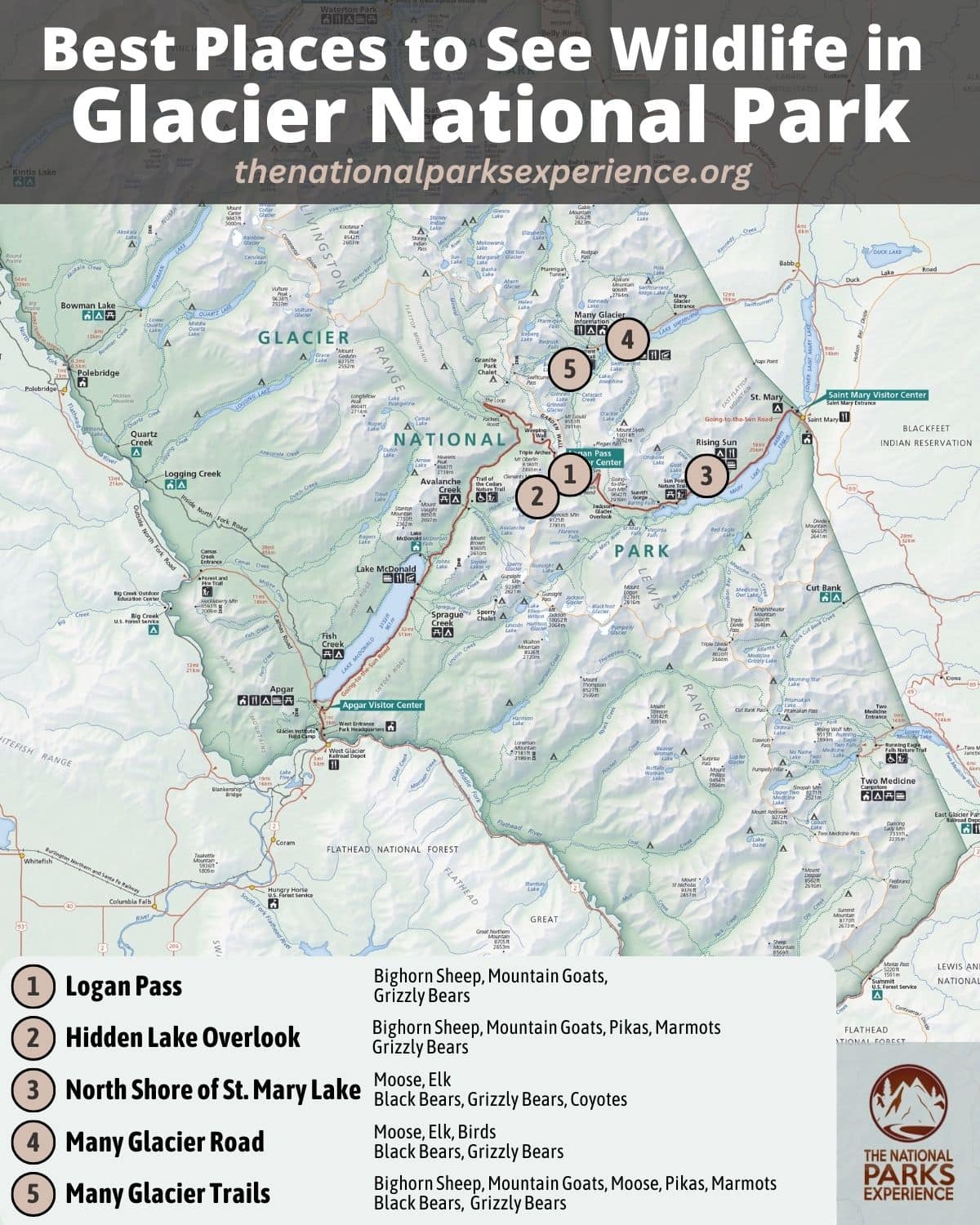
Recommended Glacier National Park Books
If you’re planning a trip to Glacier National Park, here are some recommended books to enhance your experience:
- “Glacier National Park: Hiking, Camping, Lakes & Peaks (Travel Guide)” by Moon and Becky Lomax
- “The Father of Glacier National Park: Discoveries and Explorations In His Own Words” by George Bird Grinnell
- “Rangers, Trappers and Trailblazers: Early Adventures in Montana’s Bob Marshall Wilderness and Glacier National Park” by John Fraley
- “Death in Glacier National Park: Stories of Accidents and Foolhardiness in the Crown of the Continent” by Randi Minetor
Share Your Wildlife Encounters!
Have you had the incredible opportunity to see wildlife in Glacier National Park? Share your experiences and favorite national park moments below!
Wildlife in Other National Parks
If you’re interested in wildlife viewing in other national parks, check out our guides:
- Badlands National Park Wildlife Viewing Guide
- Everglades National Park Wildlife Viewing Guide
- Grand Teton National Park Wildlife Viewing Guide
- Shenandoah National Park Wildlife Viewing Guide
- Wind Cave National Park Wildlife Viewing Guide
- Yellowstone National Park Wildlife Viewing Guide
This article was brought to you by 5 WS – your comprehensive source for information on various topics.


